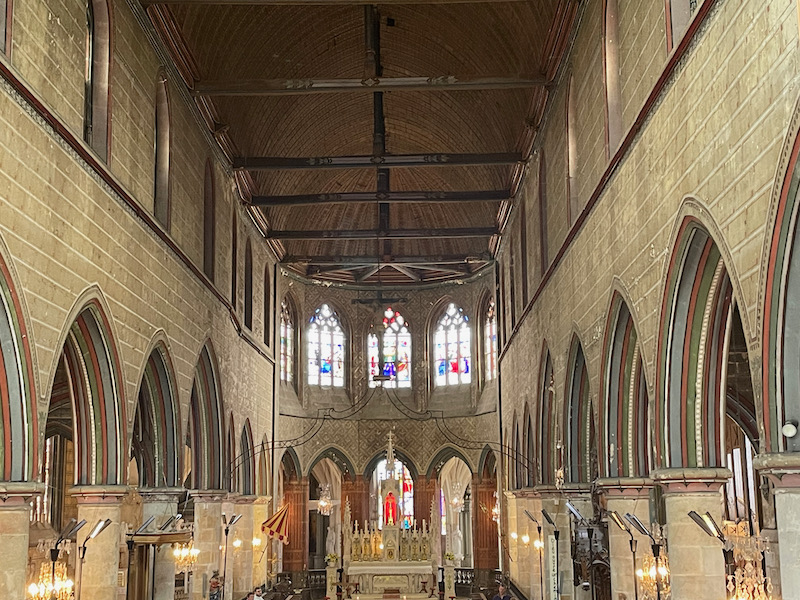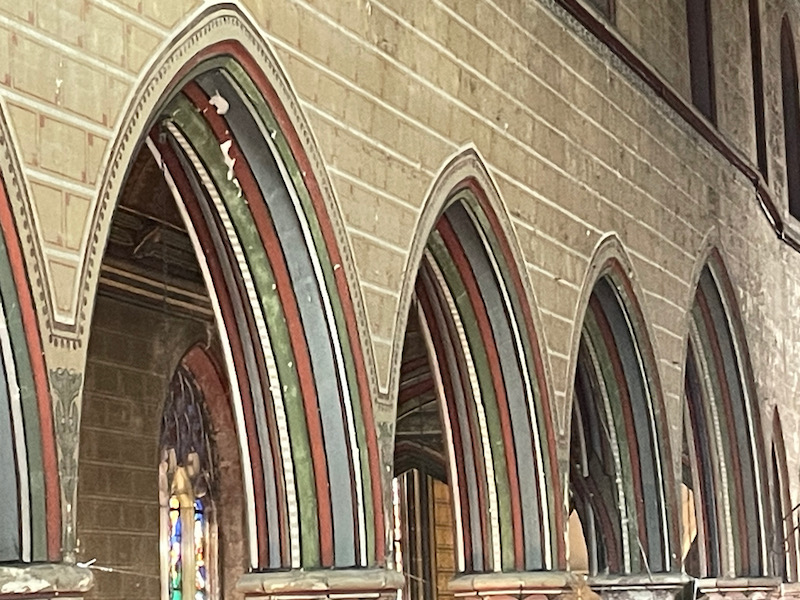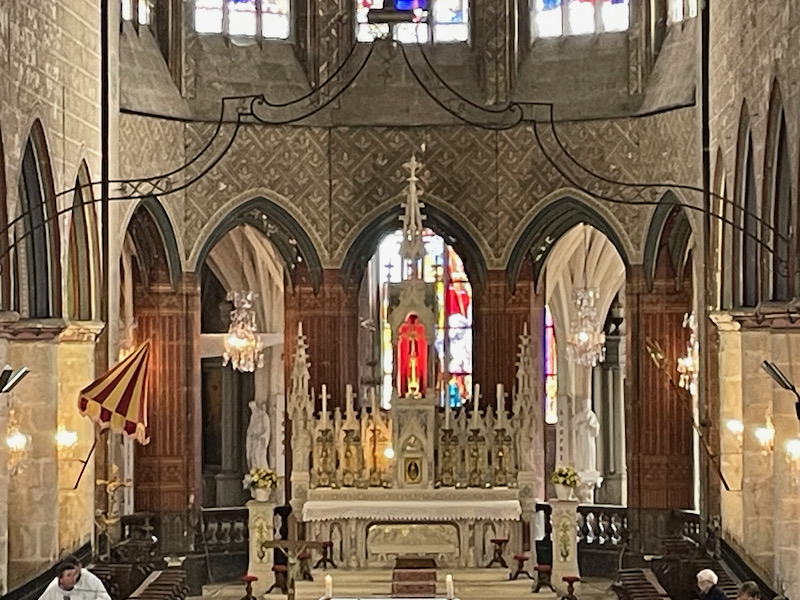Our Blog - Normandy 2023 - Bernay, France
The name Bernay is rooted in 5th century Roman settlement Brinnacu, from the Latin Brinnacum ("braided"), reflecting the marshy land with various small river channels that the original settlement was built on. Between 996 and 1008, Duke of Normandy Richard II offered this area in dowry to his wife, Judith of Brittany, who then had a Benedictine abbey built. The monks used the streams flowing through the area for things like cleaning, mills and fisheries. Here is one of those small channels running through town.
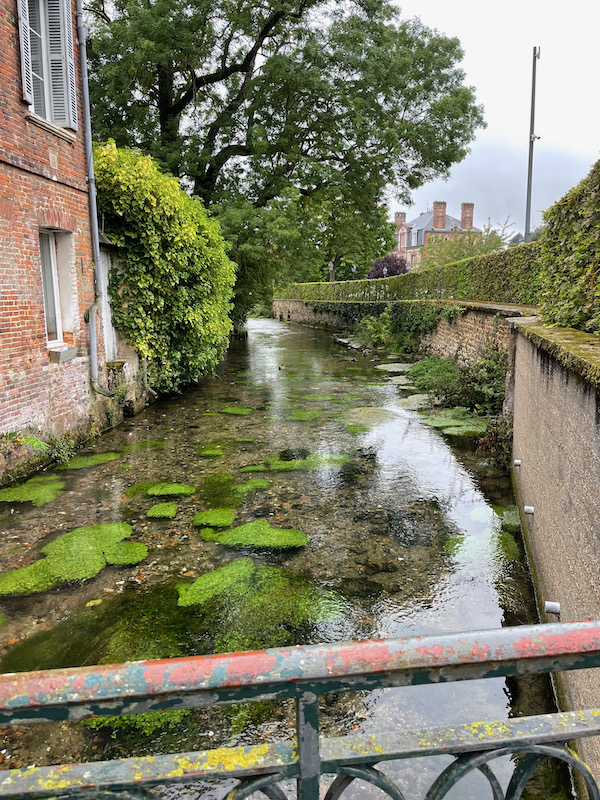
The downtown area is quite nice .... mainly one very long street lined on both sides with commerce, some in half-timbered houses.
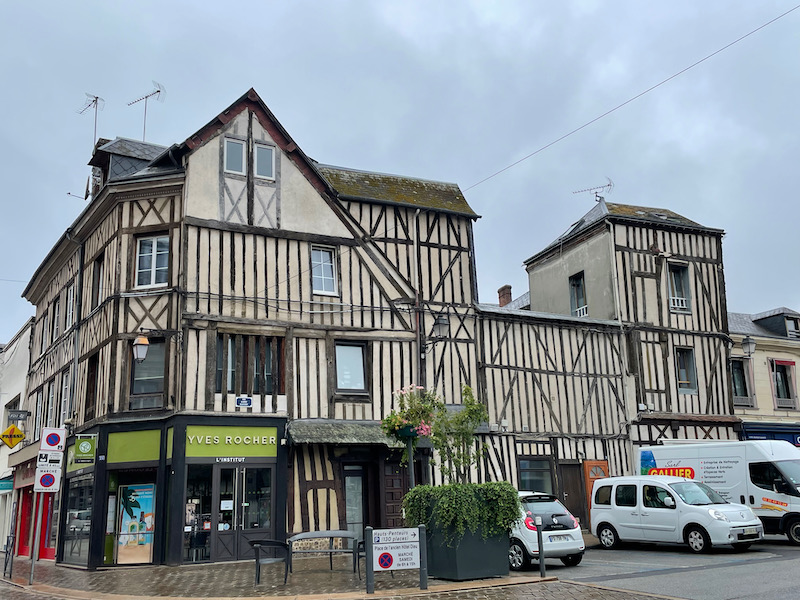
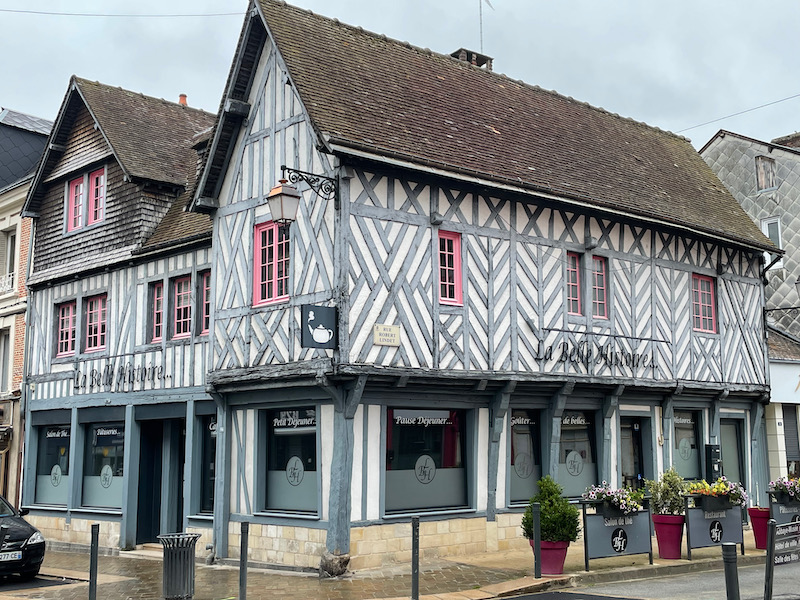
This one has a wooden carriage entrance with really nice wood carvings, like this face and a dragon.
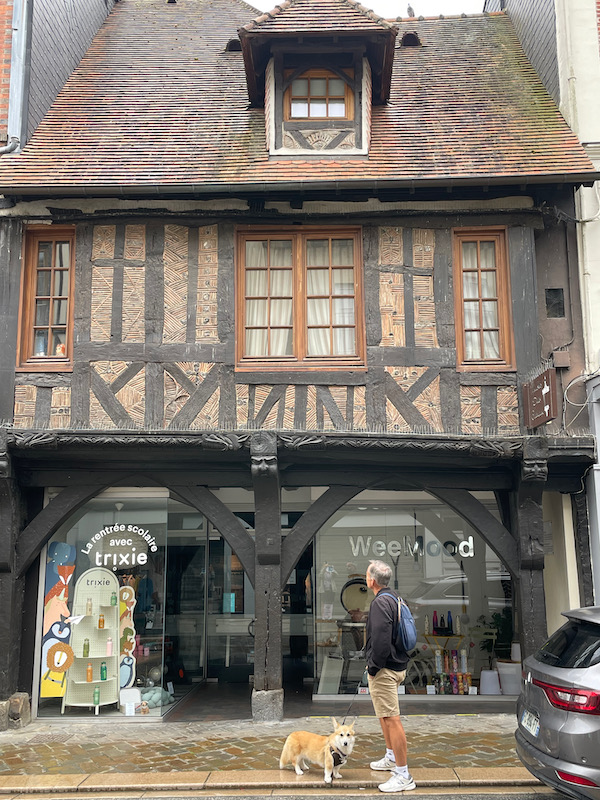
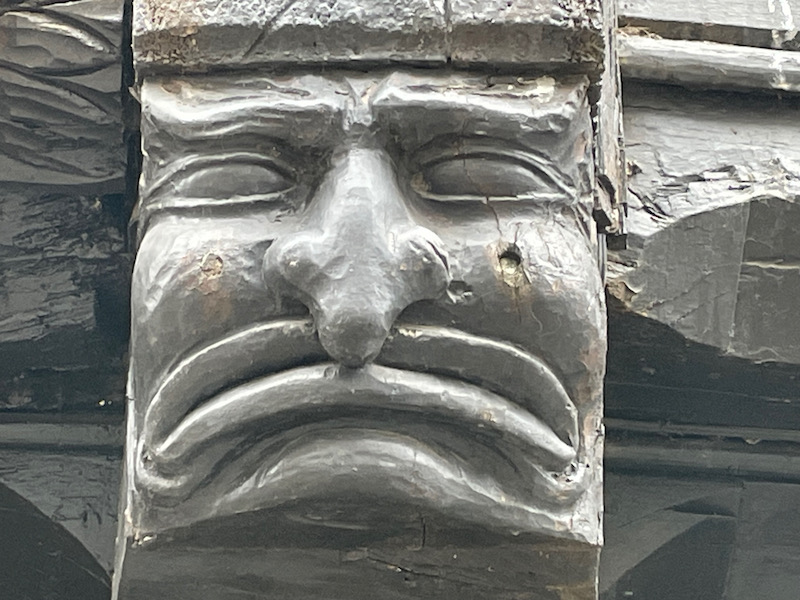
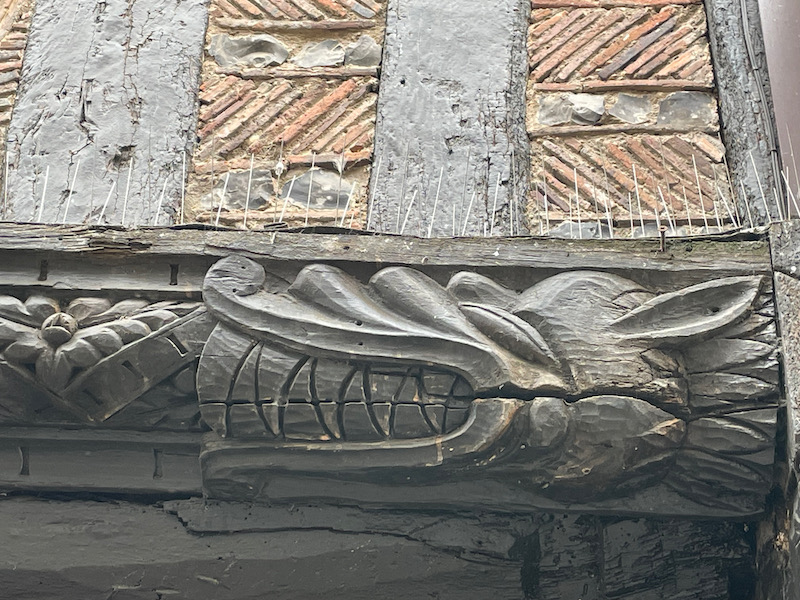
This is the Abbey Notre-Dame de Bernay, which was founded in the 11th century by Judith of Brittany, wife of Richard II, Duke of Normandy. Unfortunately, we ended up in Bernay 2 times but always in the morning and the Abbey is only open in the afternoons. This front facade is very simple, but moving around to the back, the wooden apse looks very odd for a church. In fact, the apse prior to the 15th century looked like this: semi-circular and made of wood. It was redone in the 15th century in Gothic style, then demolished and replaced by a flat wall. A recent restoration went back to the original plan in wood.
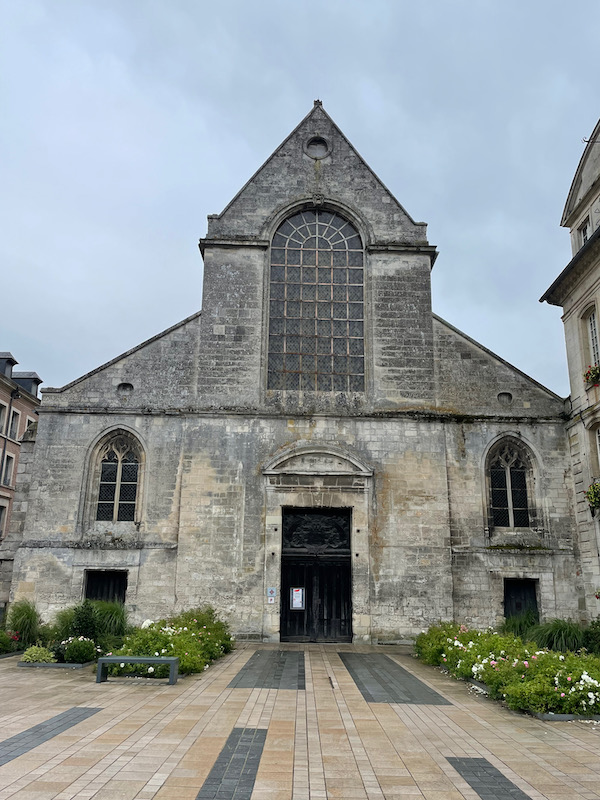
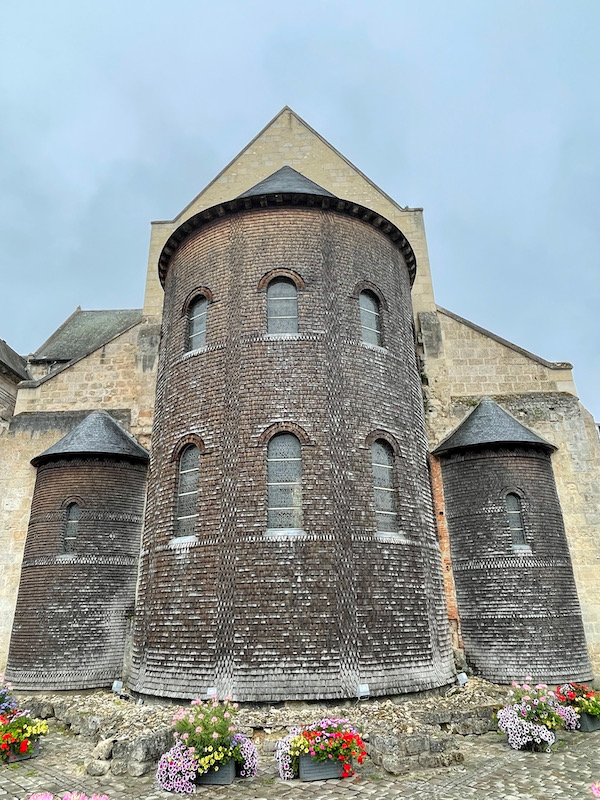
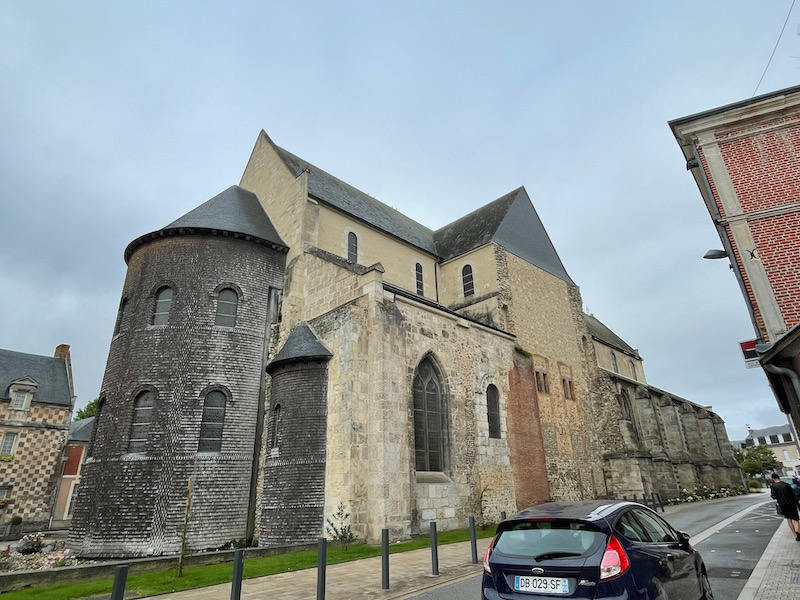
Next door is the Musée des Beaux-Arts (The Bernay Fine Arts Museum), housed in a former house of the Abbey abbot. This building, in a checkerboard pattern of brick and stone, is an example of early 17th-century architecture.
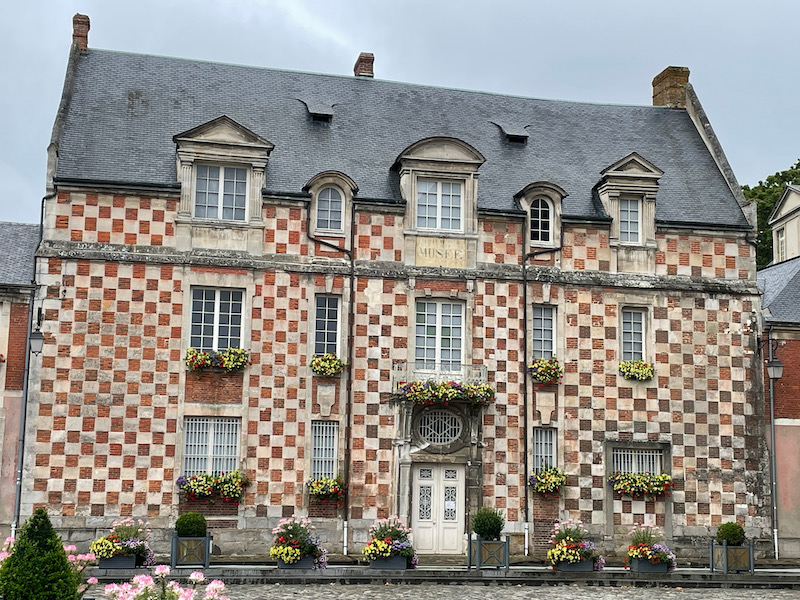
The Église Sainte-Croix was built to be the parish church of Bernay. Started in 1374, it was finally finished in 1530. The portal, which I think is ugly, was done during the first half of the 18th century.
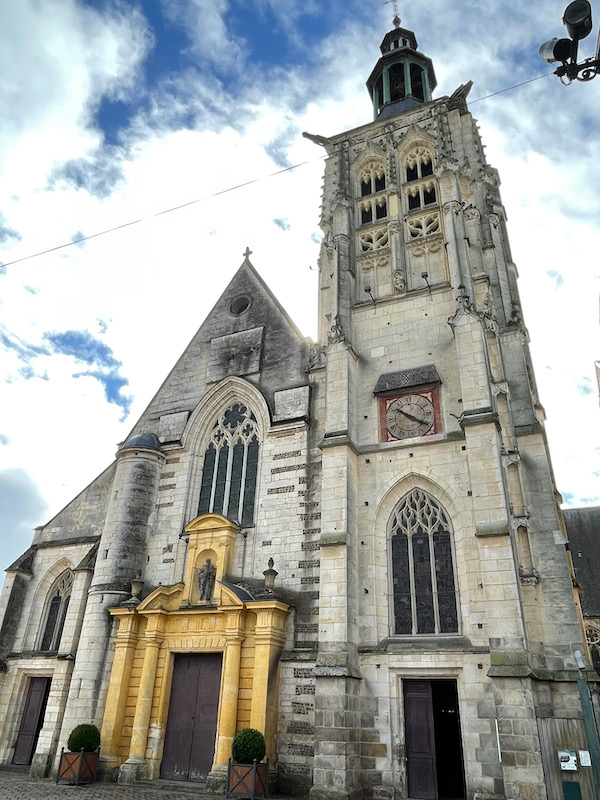
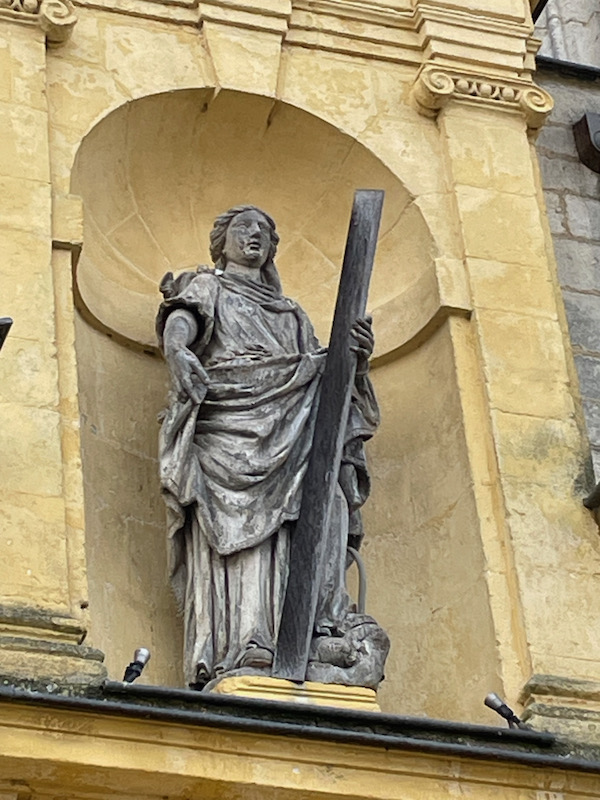
Inside, you can see the large arcades resting on large columns. Above the columns are a set of statues of the apostles and evangelists that came from the Abbey of Bec-Hellouin. The upper level has no gallery but just a set of stained-glass windows. You can also see how the wood ceiling is (again) shaped like the upside-down hull of a boat, but here, each of the ribs of the ceiling is painted.
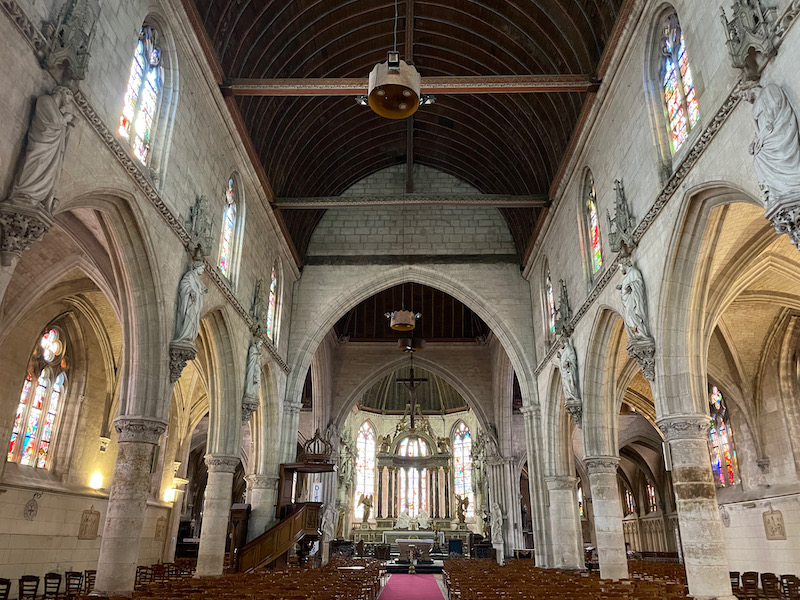
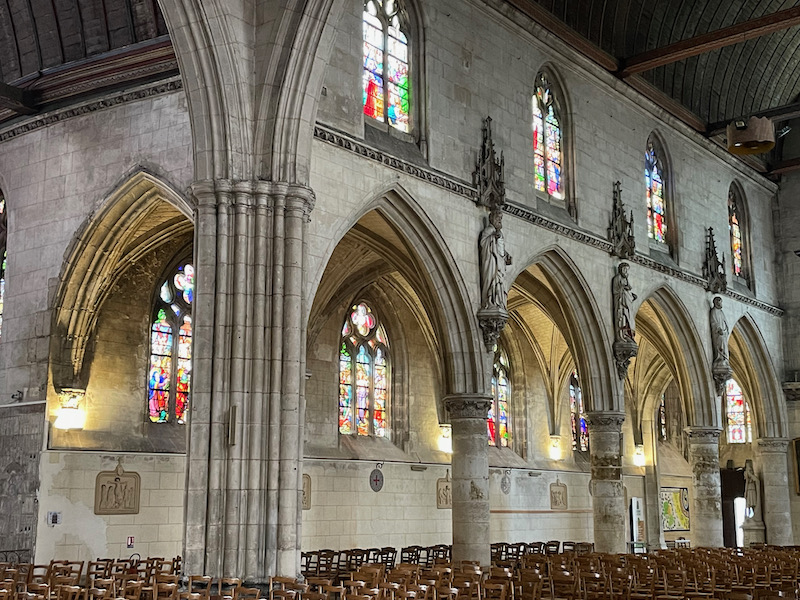
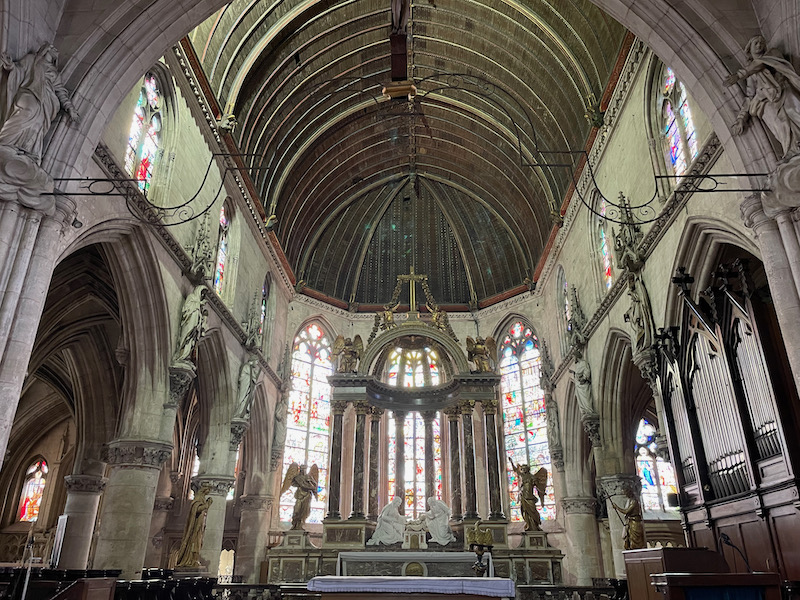
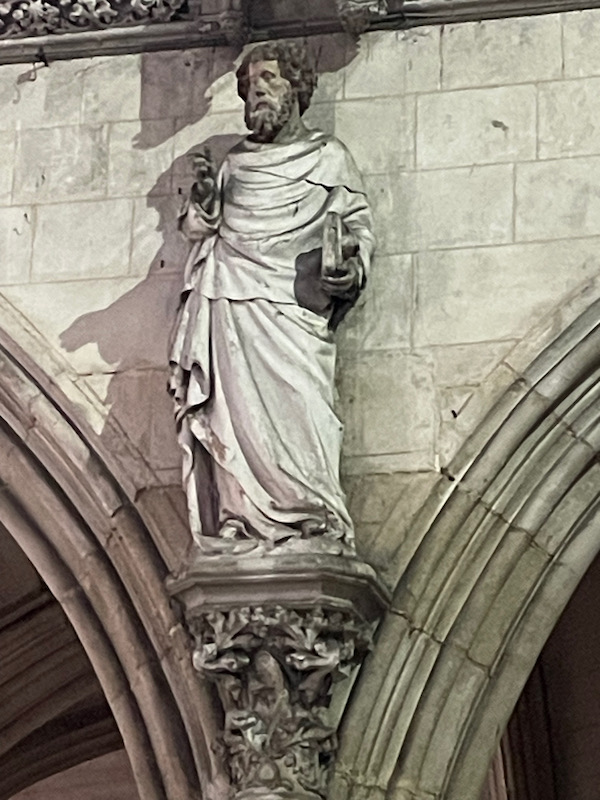
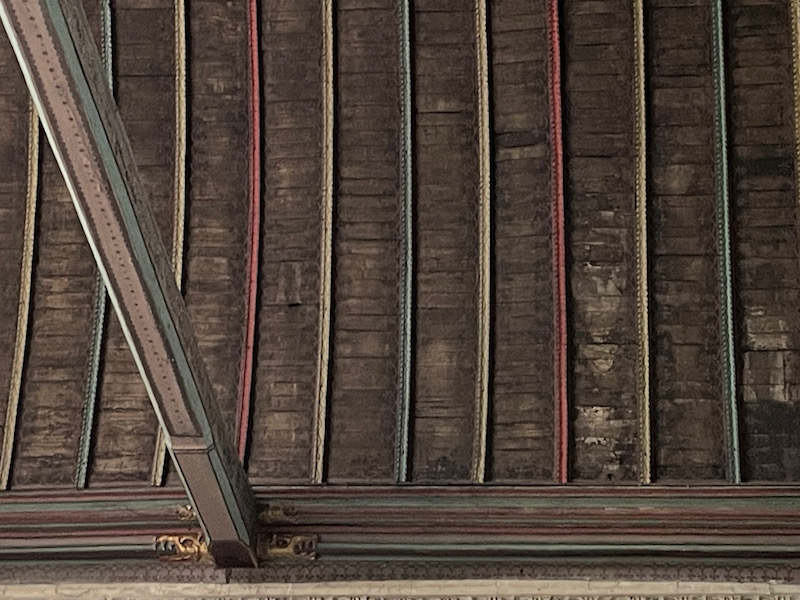
I am not sure how old the stained-glass windows are, but they were restored fairly recently, in 1998.
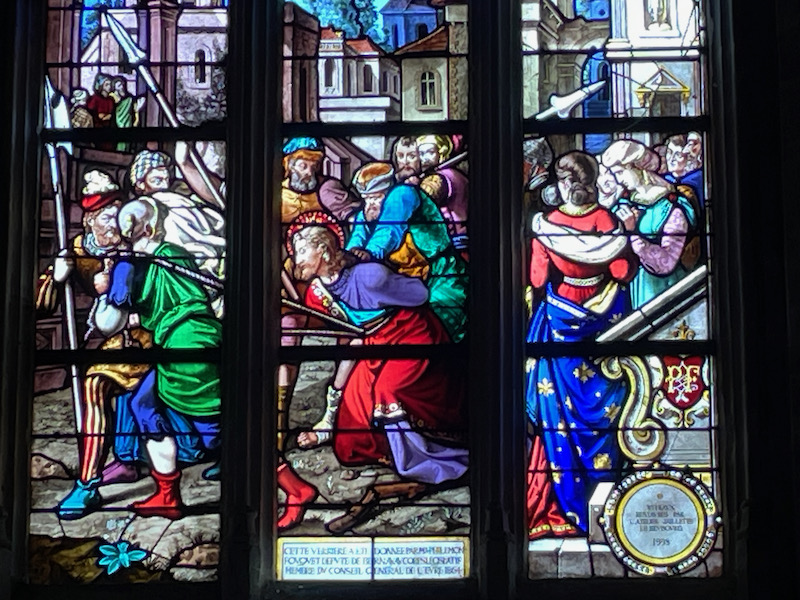
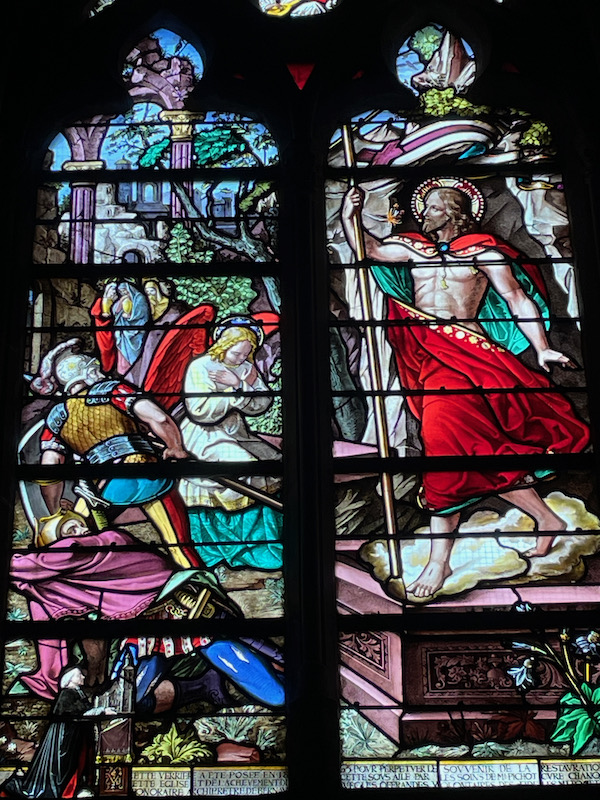
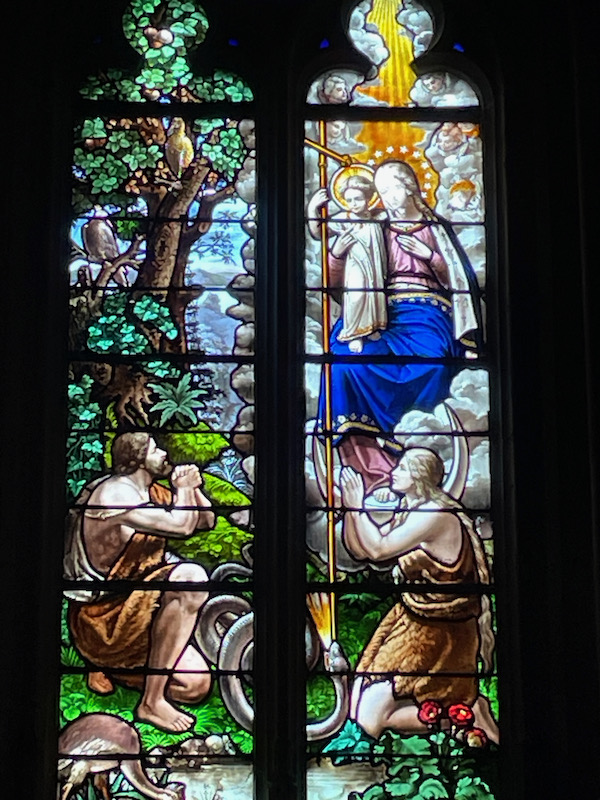
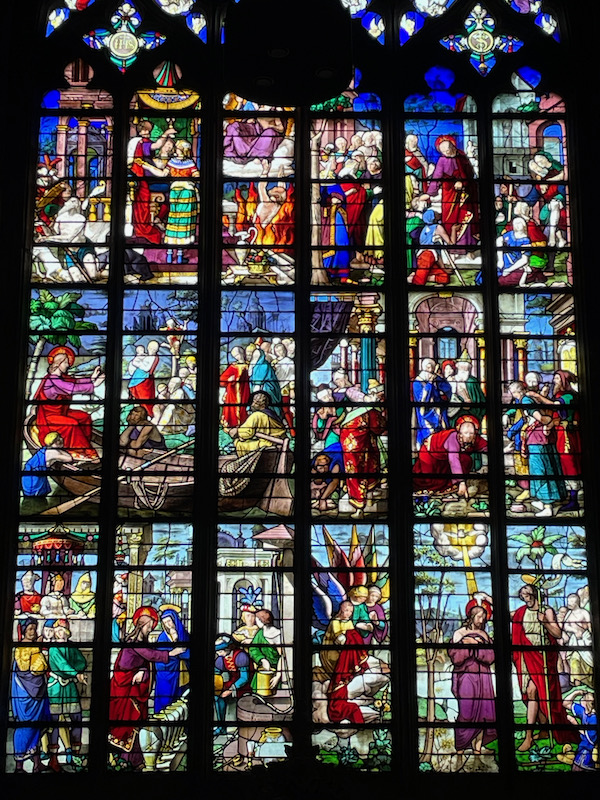
On either side of the main apse are smaller chapels, this one had a nice altar with bas-reliefs on the front
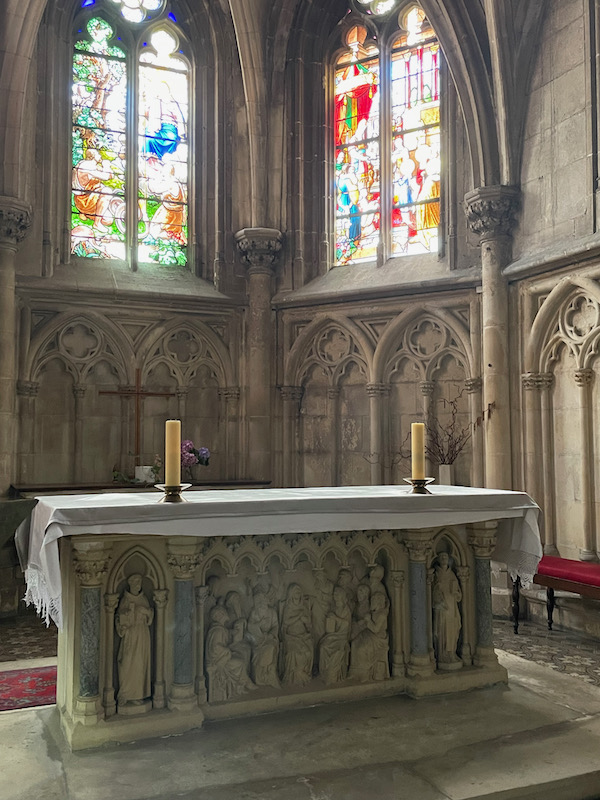
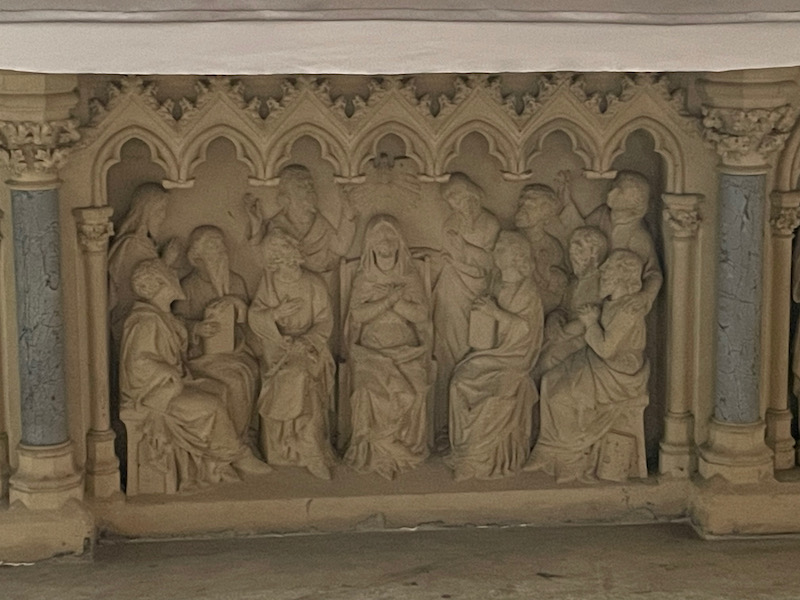
The high altar of choir 3 surmounted by 8 marble columns was executed in 1683-1684 according to the plans of Guillaume de La Tremblaye, a lay brother originally from Bernay. The colonnade houses the marble tabernacle and a Nativity of which only the child Jesus is in marble, Joseph and the Virgin Mary are in terracotta. This group is the reproduction of a work executed by Michel Anguier for the Notre-Dame du Val-de-Grâce church in 1662.
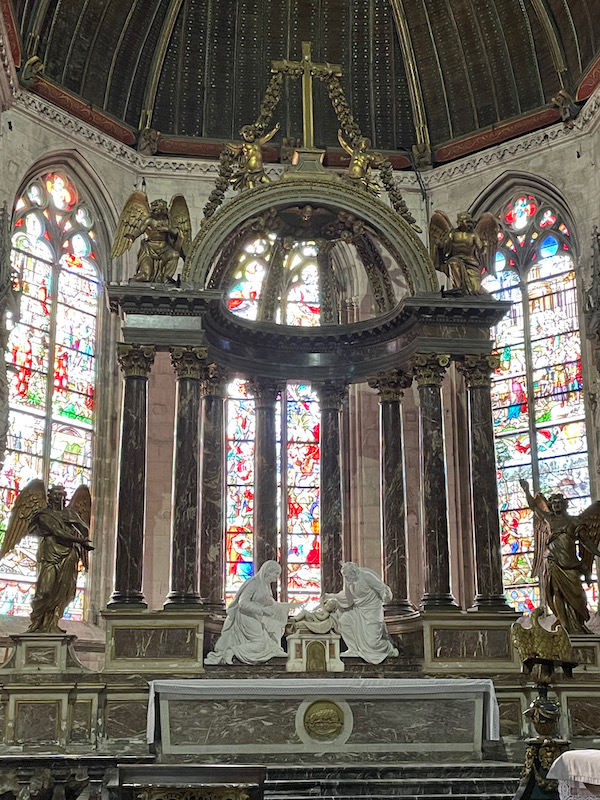
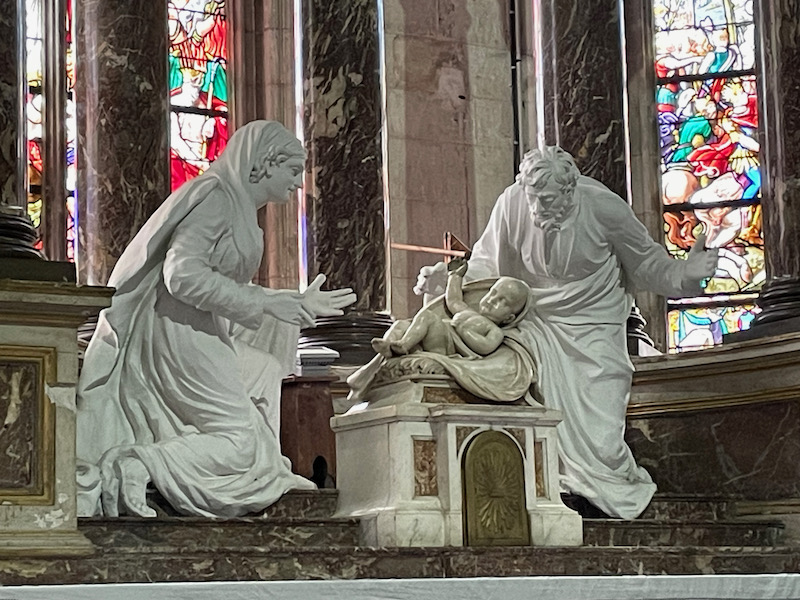
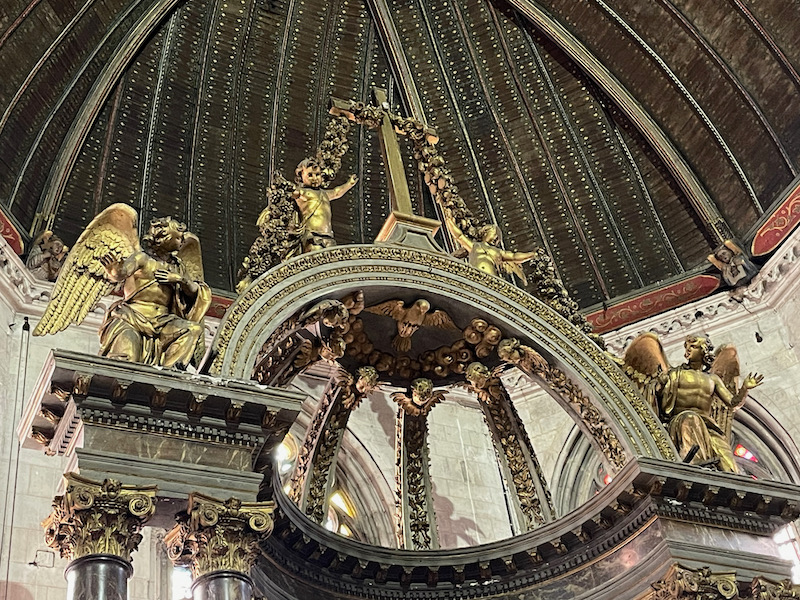
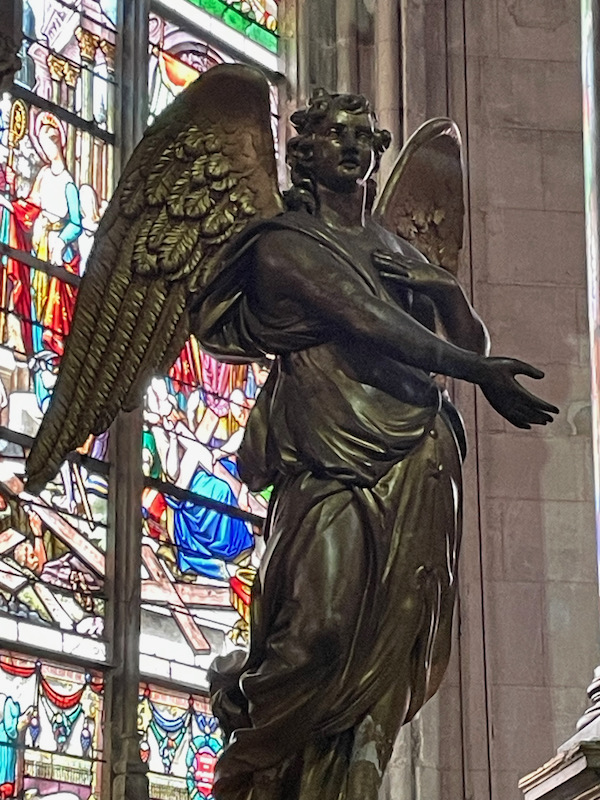
There are a couple statue groups, this one showing the Entombment.
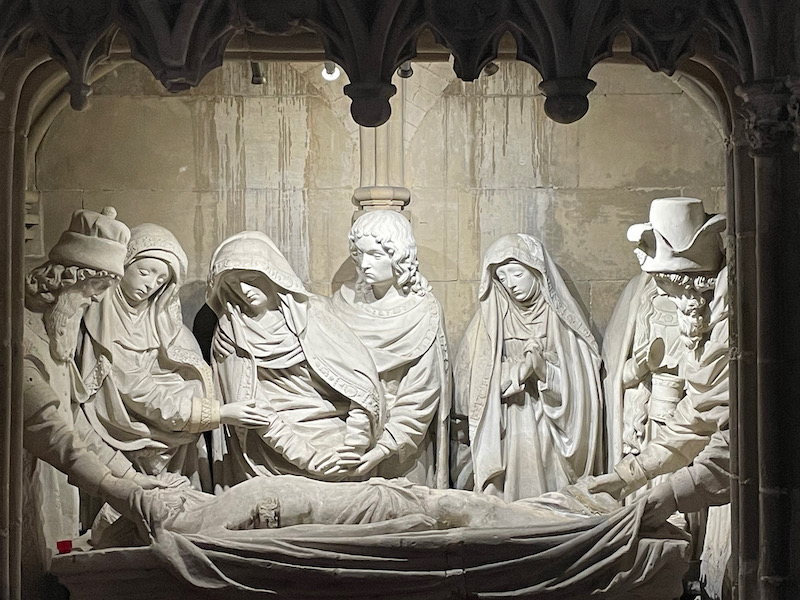
There are also 5 funerary slabs of abbots of the Le Bec Abbey, including this one, which is of an unknown abbot.
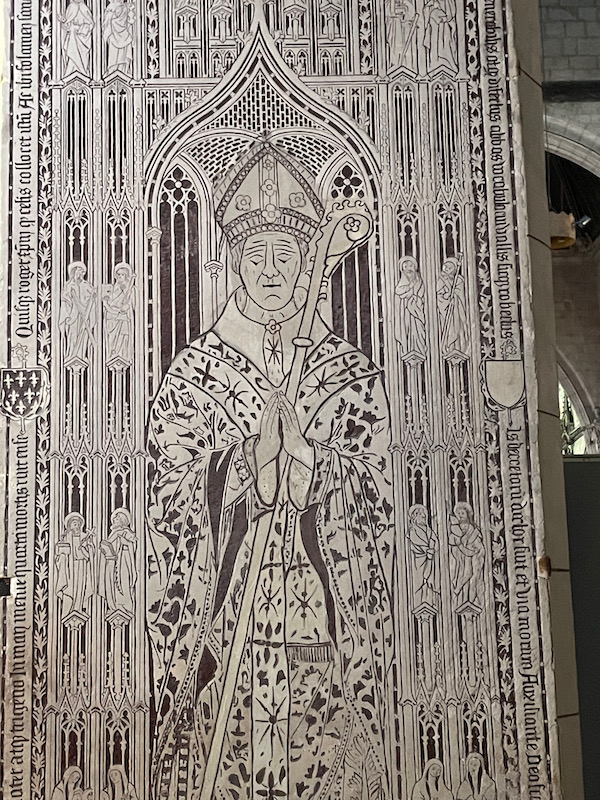
According to legend, a sheep unearthed a statuette of the Virgin in a hamlet called La Couture (meaning "culture' in old French). This discovery is the beginning of a pilgrimage and leads to the construction of a church in the 13th century. It was rebuilt in the 14th and 15th centuries, then enlarged in the 16th century, eventually becoming the Basilique Notre-Dame de la Couture. The exterior looks a little odd with the type of stone that was used and the fact that it has a little circular turret on the corner.
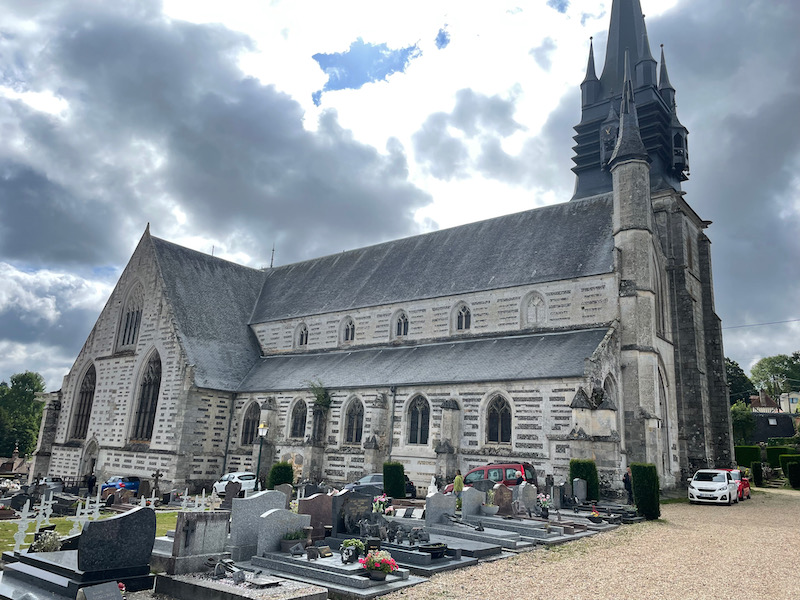
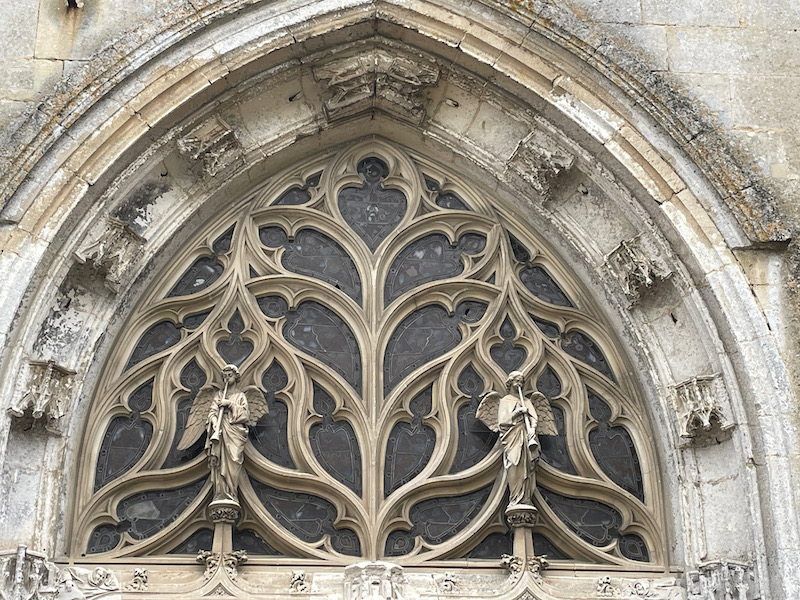
Not many pictures since it was a holiday in France when we visited and there was a service going on. I just grabbed a couple pictures from the back, including one that shows how the vaults are painted on the inside with different colors.
